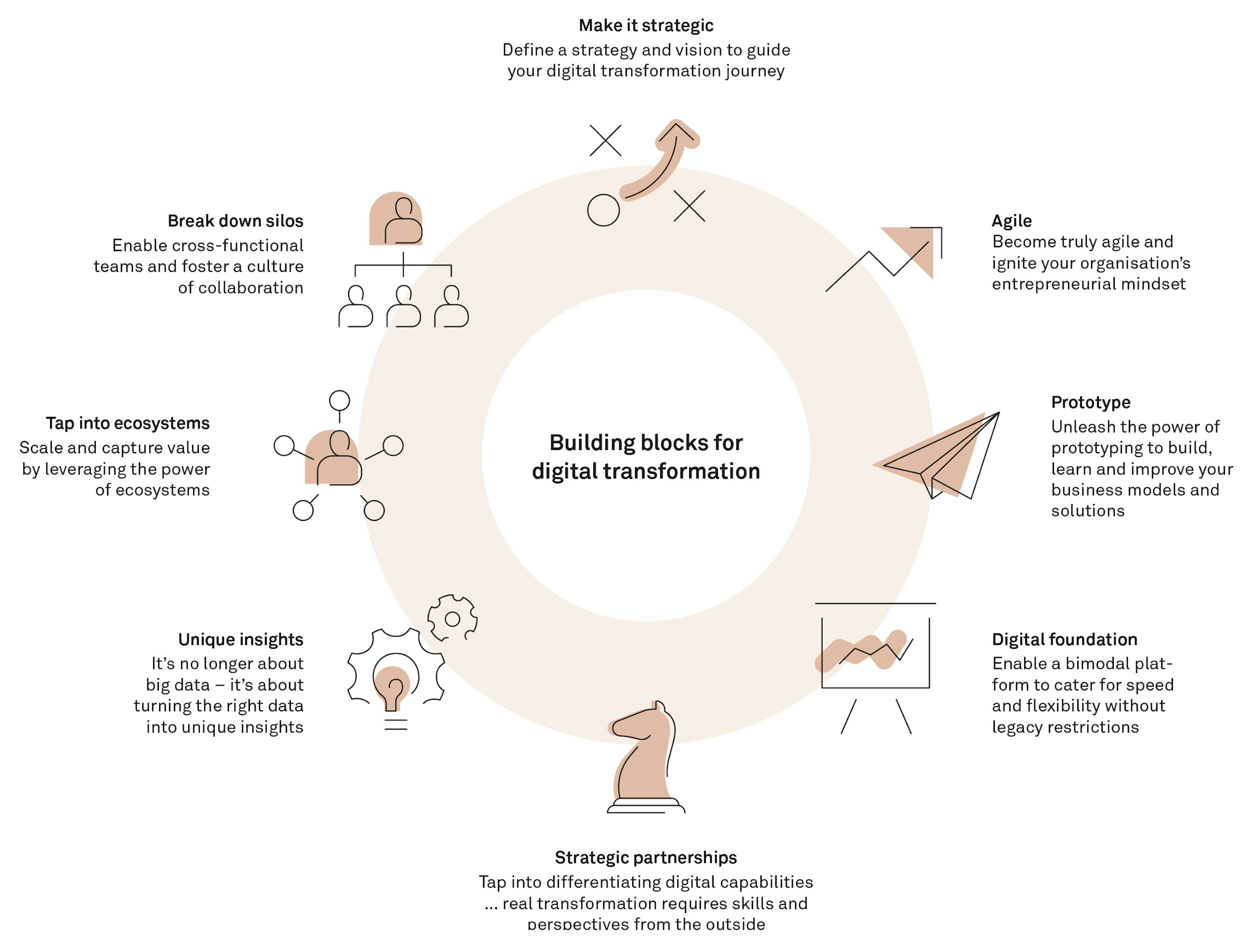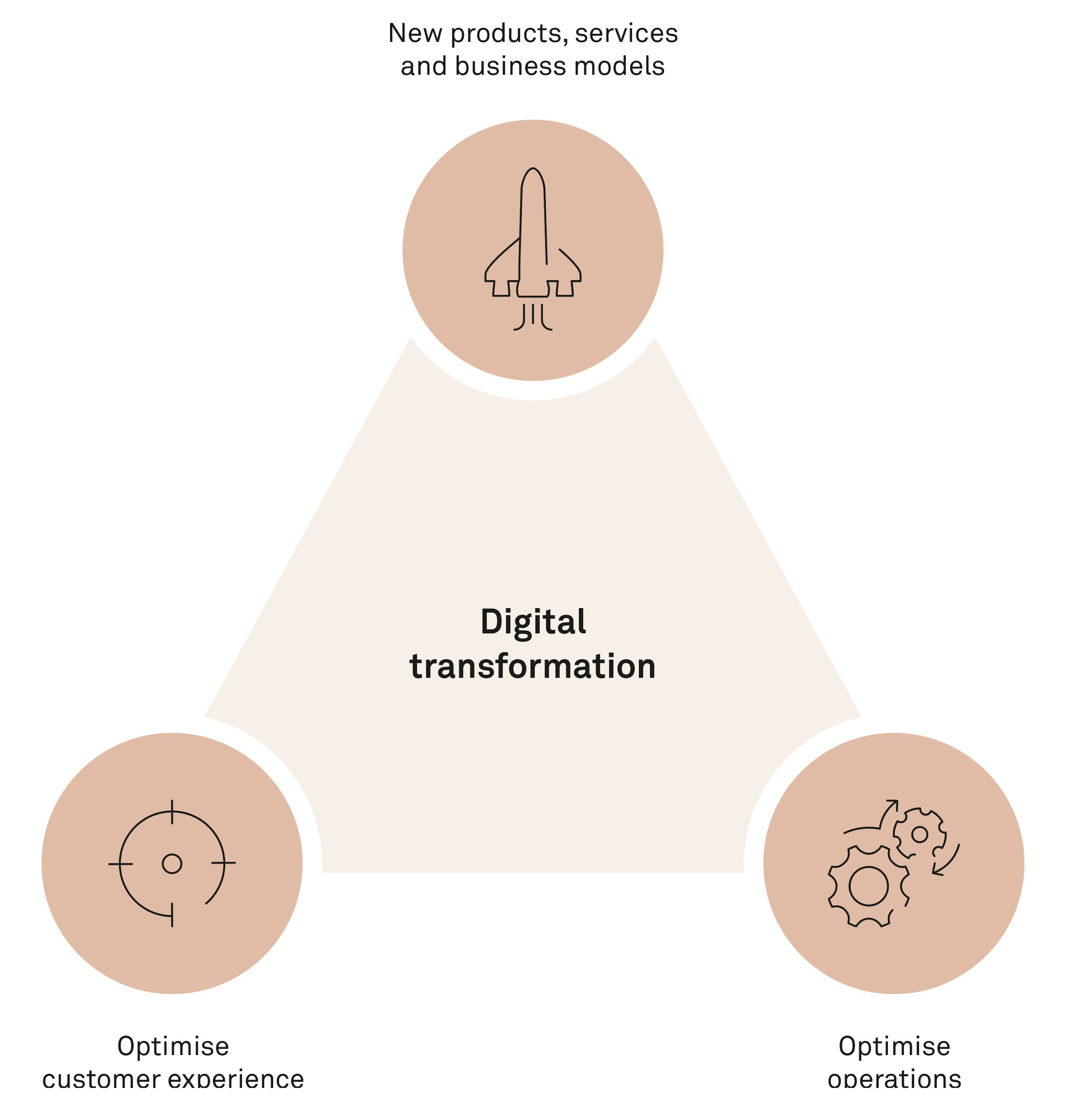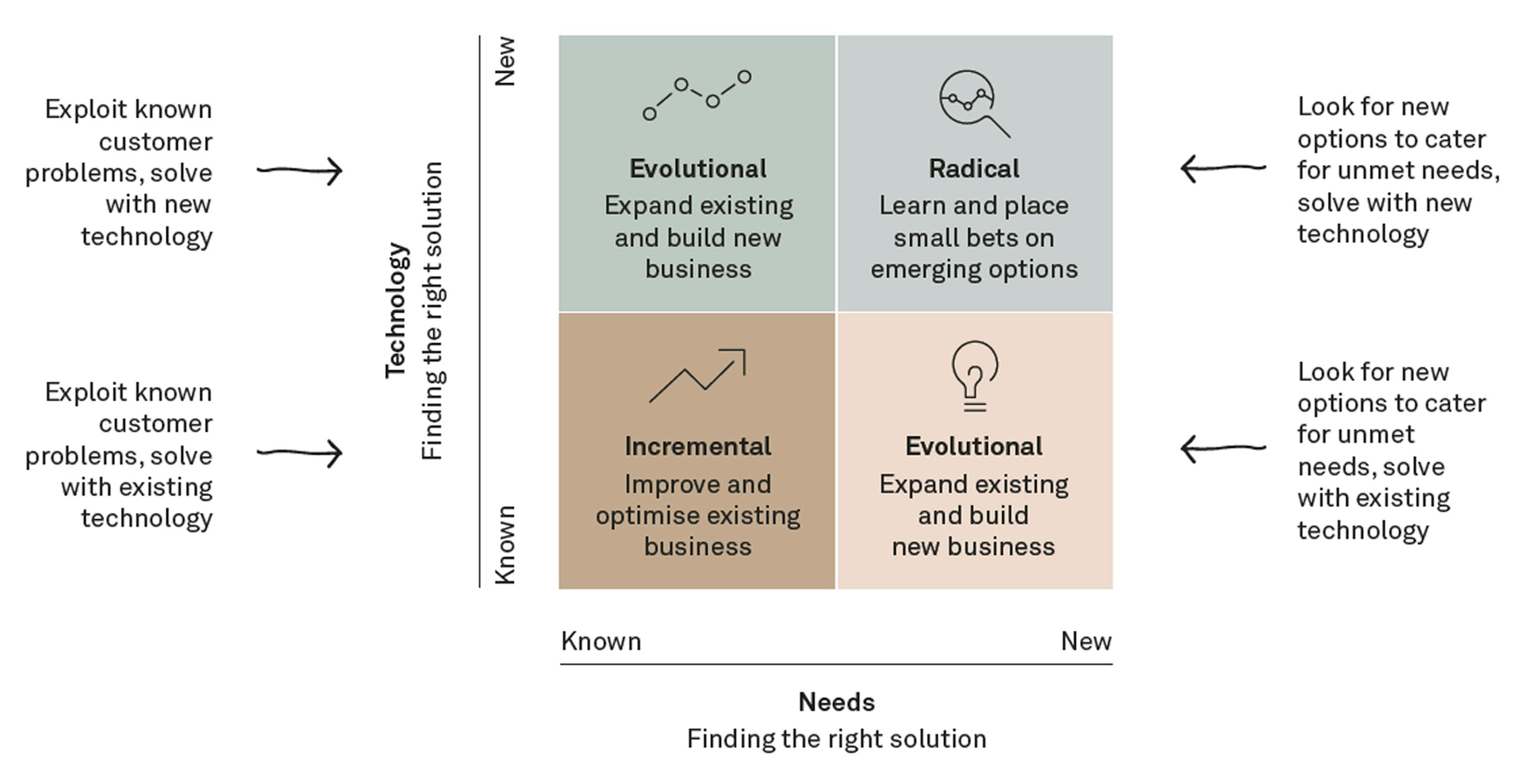30 April 2019
Today, all organisations must be digital and play to win in a digital arena. But what should you focus on to create and capture value from digital transformation? These are the things we have observed successful organisations do to ignite their digital journey.
Digital transformation is one of the top strategic priorities of most corporations today and is identified as the primary source of new growth opportunities while simultaneously being identified as a key threat. Business leaders have for a long time listened to tales of disruption and seen how emerging technologies have enabled new business models that have drastically changed industries and turned the ranking of the world’s most valuable companies upside down.
It is no longer just buzz but a reality that all organisations need to adapt to and determine how to approach. But as inspiring as the rapid growth of the digital unicorns of the world is, and as horrifying as the many stories of incumbents being disrupted may be, many leaders are left with identifying what this actually means for the organisation. How do you tap into the endless opportunities of digitalisation and capitalise positively on the technology-driven transformation that is currently changing your industry?
dig-i-tal trans-for-ma-tion/dijidltran(t)sfər’māSH(ə)n/ noun
In business, a fundamental change, a metamorphosis, in how companies generate value for their owners and other stakeholders, achieved by applying digital technologies and ways of working to all aspects of the business.
Here is our viewpoint on what to focus on to create and capture value from digital transformation based on what we have observed that successful organisations do to ignite their digital journey.
Make it strategic
To engage and align the organisation on a shared digital aspiration, it’s imperative to formalise a vision and a strategy providing the direction to its achievement. The strategy should formalise the level of innovation the organisation seeks to explore as well as the focus areas for digital transformation whether they are digital innovation of new products and services, digitalising the customer experience, digitalising operations or a mix of all (Figure 1).
Organisations that have digitalisation as a core element of their value proposition are often able to incorporate their digital strategy into their corporate strategy, while other organisations succeed by establishing a dedicated digital strategy to drive their efforts. What’s important is that the vision is clear, and that strategy is understood and alive in the organisation.
Become truly agile
Digital transformation is all about continuously working in iterations to explore technologies and develop functionalities that can be tested, improved and released in rapid fashion. Furthermore, it is about embracing an agile mindset of empowering teams to set priorities and design solutions as they learn while applying transparency and accountability with focus on value creation. In essence, digital transformation is an ongoing exploratory journey of innovation for which you cannot plan ahead. Change is a constant and being able to swiftly apply new priorities and reallocate resources without having to await yearly budget allocation processes is thus key.
Learn to prototype
Learn to apply a design thinking approach and nurture a culture of exploration, where failing early is a strength rather than an indication of poor judgement. Build capabilities that enable the organisation to develop prototypes and engage with customers to capture their valuable feedback to guide solution design prior to implementing and scaling new solutions. Digitally advanced organisations incorporate this as a standard process in their development of new business models and digital products and reap benefits of bringing solutions faster to market in addition to becoming customer-centric and really listening to the voice of customers to fully understand their ideas, pains and needs.
Proactively scout technologies and engage in short-term prototype sprints to assess potential and applicability and enable early capability development to be able to leverage emerging technologies once they mature.
Tap into digital ecosystems
Digital ecosystems are emerging across industries and changing industry boundaries and how organisations create value to customers. Leveraging gateways, such as APIs, many organisations are tapping into ecosystems within, and outside, their industry and are sharing and consuming data to provide value to customers.
Engaging in a digital ecosystem enables improved realisation of the organisation’s technology stack, and cohabitating cloudbased platforms with third parties in a software-as-a-service model can enable easy access to functionalities and data that can be leveraged in and packaged to provide value to customers in their specific context. Research shows that 79% of top-performing digital organisations also participate in a digital ecosystem (Gartner CIO Agenda 2017).
Break down the silos
Many organisations have experimented with various digital organisational structures and placed accountability for leading the digital transformation with business and IT or introduced new digital roles in the organisation such as CDOs. There is no golden strategy to approach this as we have seen organisations succeed and fail when placing responsibility for digital transformation with business and IT and when creating a dedicated digital business unit.
What is imperative is that silos are overcome, and the entire organisation becomes ready for transformation – not just individual business units. Regardless of ownership, we see successful internal digital delivery models in a business development setup and outside the organisation as a “project X” – both depending on the digital strategy and the ambition level for innovation (Figure 2). What constitutes successful organisations is that they realise that digital transformation is neither a pure technology transformation nor a pure business-driven transformation. They succeed in establishing an organisational structure that caters to cross-functional collaboration and teams with diverse capabilities spanning both commercial aspects, design and technology.
Turn data into insights
Following years of focusing on driving value from big data, the buzz has changed towards leveraging third party data and enabling and capitalising high potential data-driven technologies such as artificial intelligence. However, rather than letting specific technologies take all the focus, many successful digital organisations rightfully turn their attention to identifying the right data and bringing this to the right people in the right context and format. Investing in developing analytic capabilities to assess different sources of data and to identify the specific data that can be turned into unique insights is key. Data is the fuel of digital transformation, but it is not the quantity of data that differentiates leading digital organisations from the rest; it is their ability to extract insights and leverage these to gain a competitive edge. This entails developing a data strategy and investing in tactical capabilities such as master data management in parallel to developing analytic capabilities.
Identify your strategic partners
The speed at which new technologies emerge and the increased complexity in selecting, developing and implementing the right digital solutions entail a broad selection of digital capabilities. The war for digital talent is on, as few organisations can recruit or develop and nurture these in-house, and many organisations struggle with coming to terms with having to source core strategic capabilities critical to the success of the organisation from third parties even as a managed service. Accepting that specific emerging capabilities are so sought after in the market that hiring is practically impossible, organisations should enter into partnerships to gain access to these capabilities and emphasise developing partnership models that enable them to manage and scale this efficiently. Similarly, as organisations tap into different ecosystems, they must increasingly be able to engage with different partners that complement their capabilities to ignite their digital transformation.
Establish the digital foundation
Establishing a solid digital foundation and platform has proven to be one of the greatest obstacles for digitalisation. The reality for most organisations is that numerous back-end legacy systems are critical sources of data, but they are so complex that managing any type of change to these systems is governed by cumbersome governance and release management processes. This is at a high risk of becoming the bottleneck that kills rhythm and energy in the digital innovation process and potentially delays timecritical digital releases. To cater to this, organisations need to engage in a bimodal two-speed IT setup enabling access to critical data while providing a digital governance mechanism catering for rapid releases. Both the digital platform and related processes need to be established and must be aligned with the organisation’s operational principles, e.g. security, to be operational. Simultaneously with developing the digital platform, digitally advanced organisations ensure not to neglect their technology legacy but maintain a focus to continuously invest and optimise and gradually move more services to the cloud.
What comes next?
Emerging technologies will continue to drive complexity and increased uncertainty, and we are sure to see radical change happen faster and impacting more industries than ever before. Organisations that dare to be bold and proactively seek to reinvent both their business model and digitalise their operations rather than solely repeating the steps of competitors will likely succeed in the long run. Every organisation is now a digital organisation and must play to win in a digital arena.







